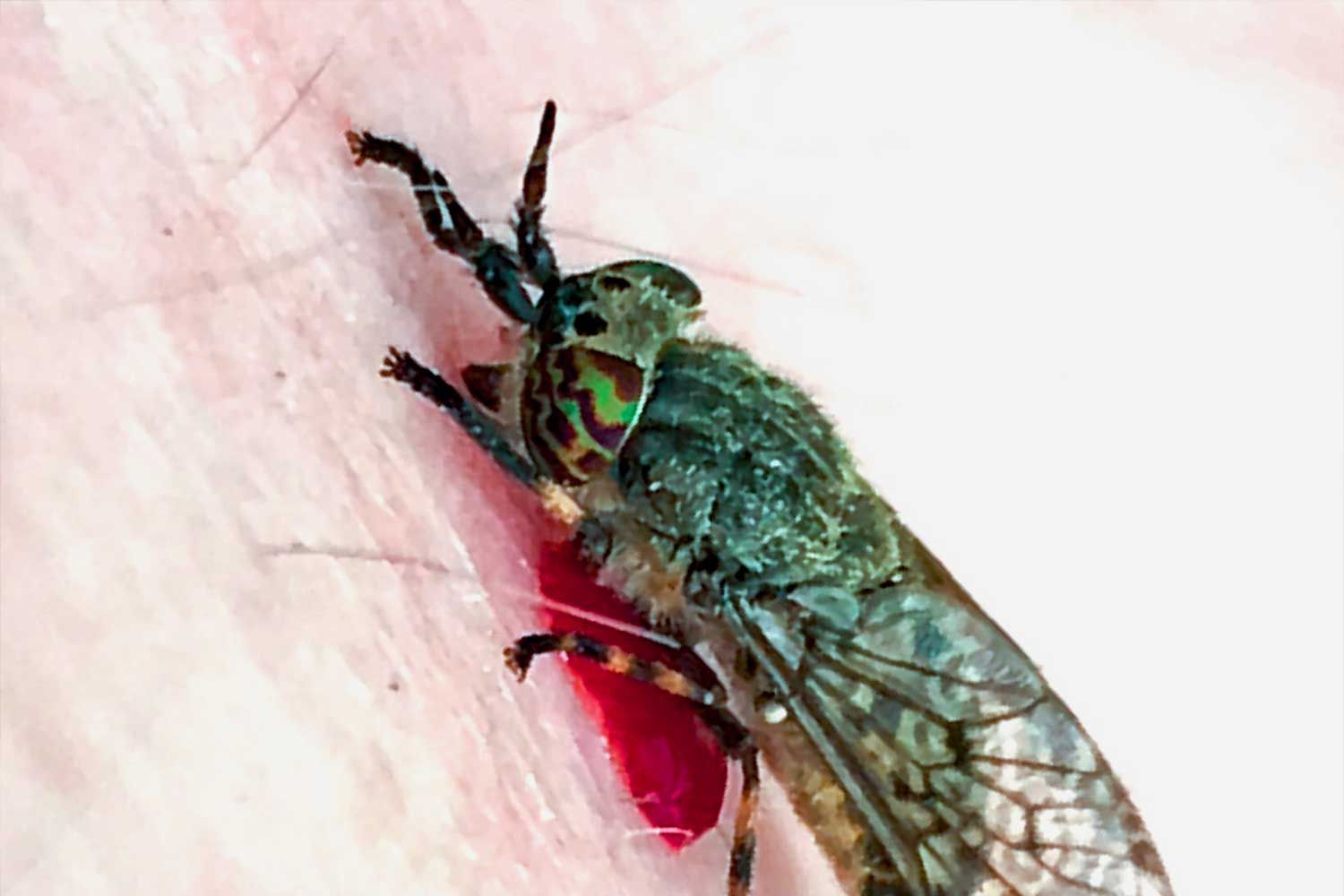
Bristol Pest Control: A Comprehensive Guide to Protecting Your Home and Property
Chapters:
- Understanding Common Bristol Pests
- The Importance of Pest Control
- Prevention Techniques for Pest Infestation
- Chemical and Natural Pest Control Methods
- Choosing the Right Pest Control Company
- DIY Pest Control Tips and Tricks
- Pest Control for Specific Areas of Your Home
- Dealing with Rodent Infestations
- Managing Insect Infestations
- Protecting Your Garden from Pests
- Commercial Pest Control for Bristol Businesses
- Environmental Impact of Pest Control
- Pest Control in Historic Bristol Properties
- Handling Emergencies and Outbreaks
- Future of Pest Control in Bristol
Introduction to protecting your home and business from pests:
Bristol is a vibrant city with a rich history and a booming economy. However, with its bustling population, rich trading history and diverse architecture, Bristol is also home to a wide variety of pests. From rodents to insects, and invasive pests, these unwanted visitors can wreak havoc on our homes, in our gardens, and in our businesses. That's why pest control is essential for any Bristol resident or property owner.
This comprehensive guide has been written by Pale Horse Pest Control Bristol and Bath - It aims to provide you with everything you need to know about pest control in Bristol. Whether you're dealing with a current pest problem or looking to prevent one, this book covers all the essential information you need. From understanding the most common pests to booking Pale Horse Pest Control to come to the rescue, we've got you covered.
In this book, you'll learn about some different pest prevention techniques, including both chemical and natural methods. We'll also provide you with practical DIY tips and tricks that can help you manage a pest problem on your own. Plus, we'll delve into the specific needs of different areas of your home and garden, as well as how to handle commercial pest control for businesses in Bristol.
We'll also discuss the environmental impact of pest control and how to manage a pest problem in a historic property. And in case of emergencies or outbreaks, we've got you covered with strategies for handling these situations.
With this book, we aim to empower you with the knowledge and tools you need to protect your home and property from pests. So without further ado, Let's get started.
Chapter 1: Understanding Common Bristol Pests
Bristol is home to a wide range of pests, each with their unique characteristics and behaviours. Understanding these pests is the first step to preventing and managing infestations. In this chapter, we'll discuss the most common pests found in Bristol and their habits. Pests include Mammals, Insects, and Birds, etc.
By understanding the habits and characteristics of these pests, you can take the necessary steps to prevent and manage infestations. In the following chapters, we'll discuss how to implement pest prevention techniques and choose the right pest control methods.
Ants
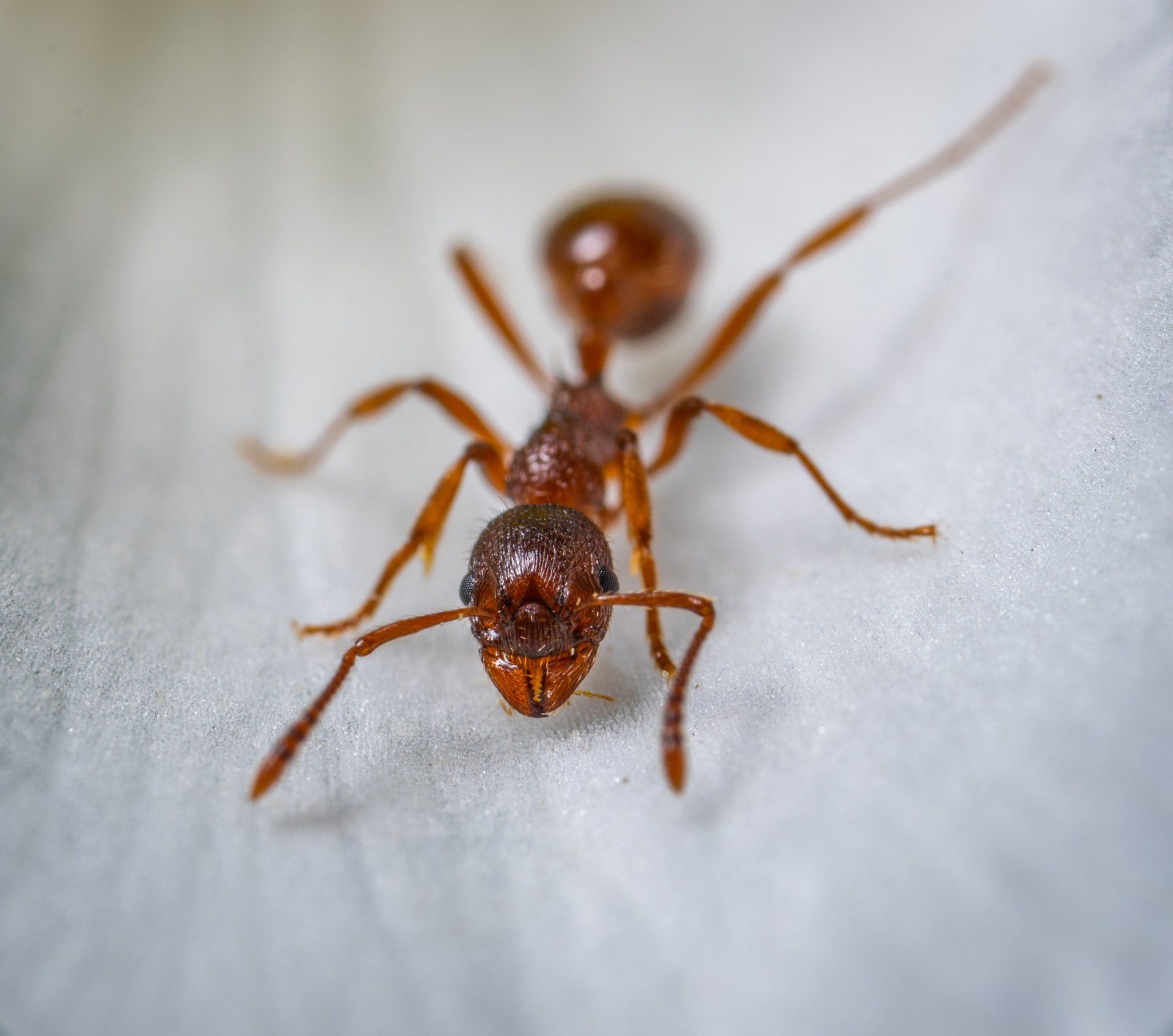
Ants are common pests that can be found in homes and businesses in Bristol, UK. Four common species of ants found in the area are the black garden ant (Lasius niger), the pharaoh ant (Monomorium pharaonis), the ghost ant (Tapinoma melanocephalum), and the Argentine ant (Linepithema humile). The black garden ant is the most common and is usually found foraging for food in gardens and homes. Pharaoh ants are smaller and can be found in homes and buildings, often nesting in hard-to-reach areas. The ghost ant is tiny, and its nests are difficult to detect due to its translucent appearance. The Argentine ant is known for forming large colonies and is found in homes and buildings, often in search of food and water. Ants can enter homes and businesses through cracks and openings in walls and foundations, seeking food, water, and shelter. They are attracted to sweet and greasy substances and can contaminate food sources. Some species of ants can cause structural damage by nesting in walls and foundations. To manage and control ant infestations, it is essential to seek the services of a pest control company like Pale Horse Pest Control. Their trained technicians can identify the species of ants and use safe and effective methods to eliminate them from homes and businesses in Bristol.
Wasps & Hornets
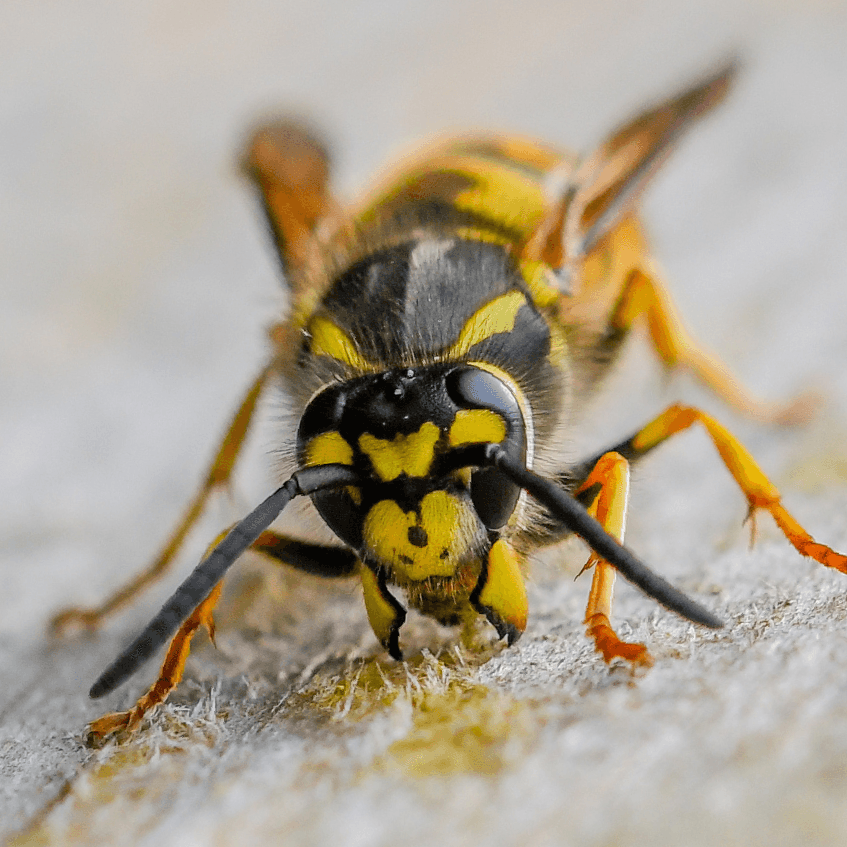
Bristol is home to several species of paper wasp, each with a unique appearance nesting habits. The most common is the Common wasp (Vespula vulgaris) and these can create nests with over 20000 stinging insects inside! The European hornet (Vespa crabro) is the largest of these wasps but nests are much smaller with no more than a few hundred hornets in most cases. Wasps love sweet foods, so wasp traps are an integral part of control. Some wasps like to nest trees and shrubs while others prefer sheds and bird boxes. Most nests are beneficial at the beginning of the year as they go about their business collecting up insect pests in your garden. By mid summer, the nests are maturing and the wasps nests become increasingly dangerous, so at this point in the year most people notice the nests and get them treated. The main thing is to stay safe and call in Pale Horse Pest Control - We would love to help.
Bed bugs
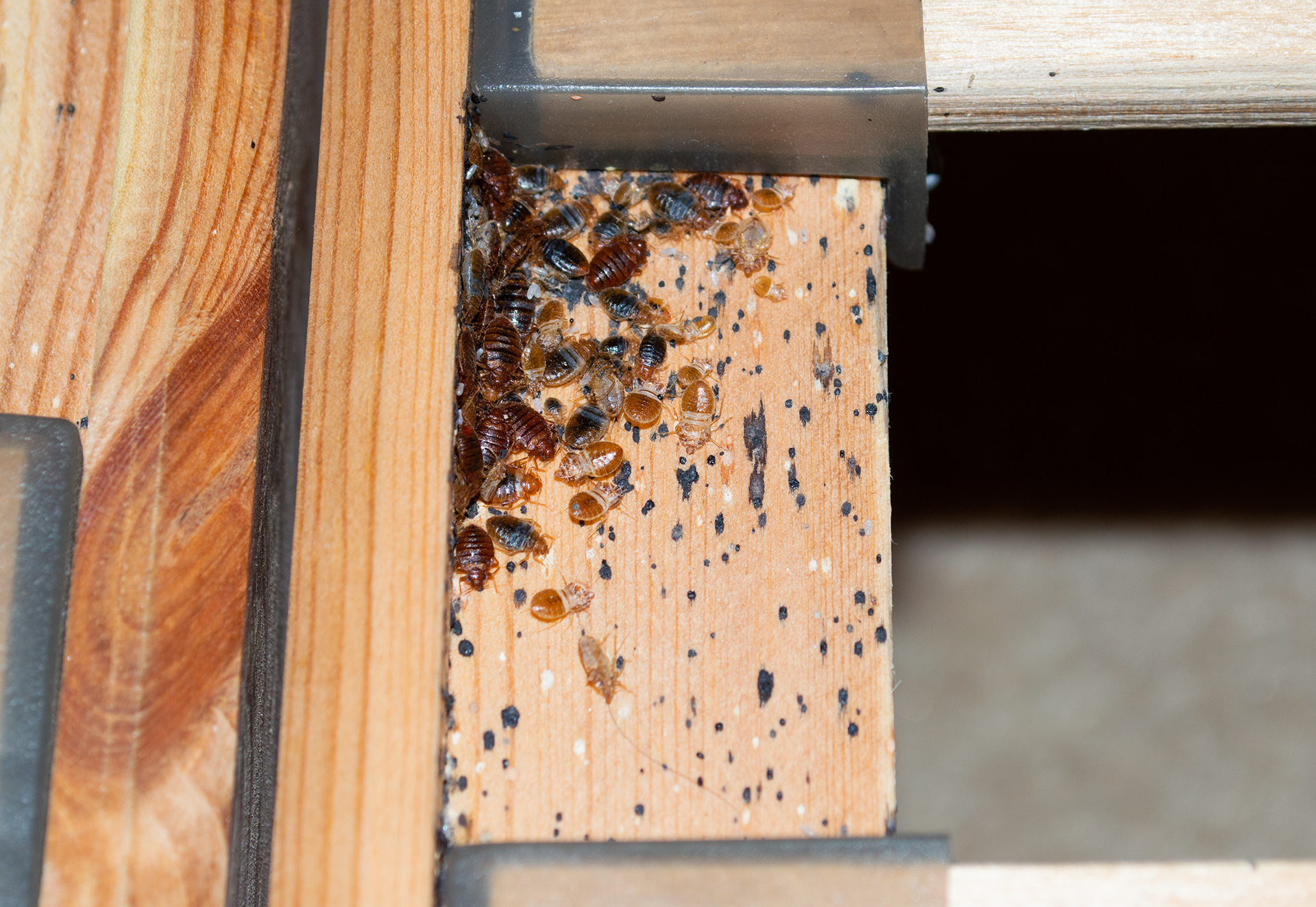
Bed bugs, scientifically known as Cimex lectularius, are small, wingless insects that feed on the blood of humans and animals. They are commonly found in homes and businesses in Bristol and are often transported through luggage, clothing, and used furniture. Bed bugs are flat, oval-shaped, and reddish-brown in colour. They are most active at night and are known for their ability to hide in cracks and crevices, making them difficult to detect. Bed bugs can cause skin irritations and allergic reactions in people who are sensitive to their bites. They are known for their ability to reproduce quickly, making it difficult to control infestations. Bed bugs can be brought into homes and businesses through various means, including travel, used furniture, and clothing. To manage and control bed bug infestations, it is essential to seek the services of a pest control company like Pale Horse Pest Control. Our technicians are trained to identify and locate bed bug infestations and use safe and effective methods to eliminate them from homes and businesses in Bristol.
Fleas
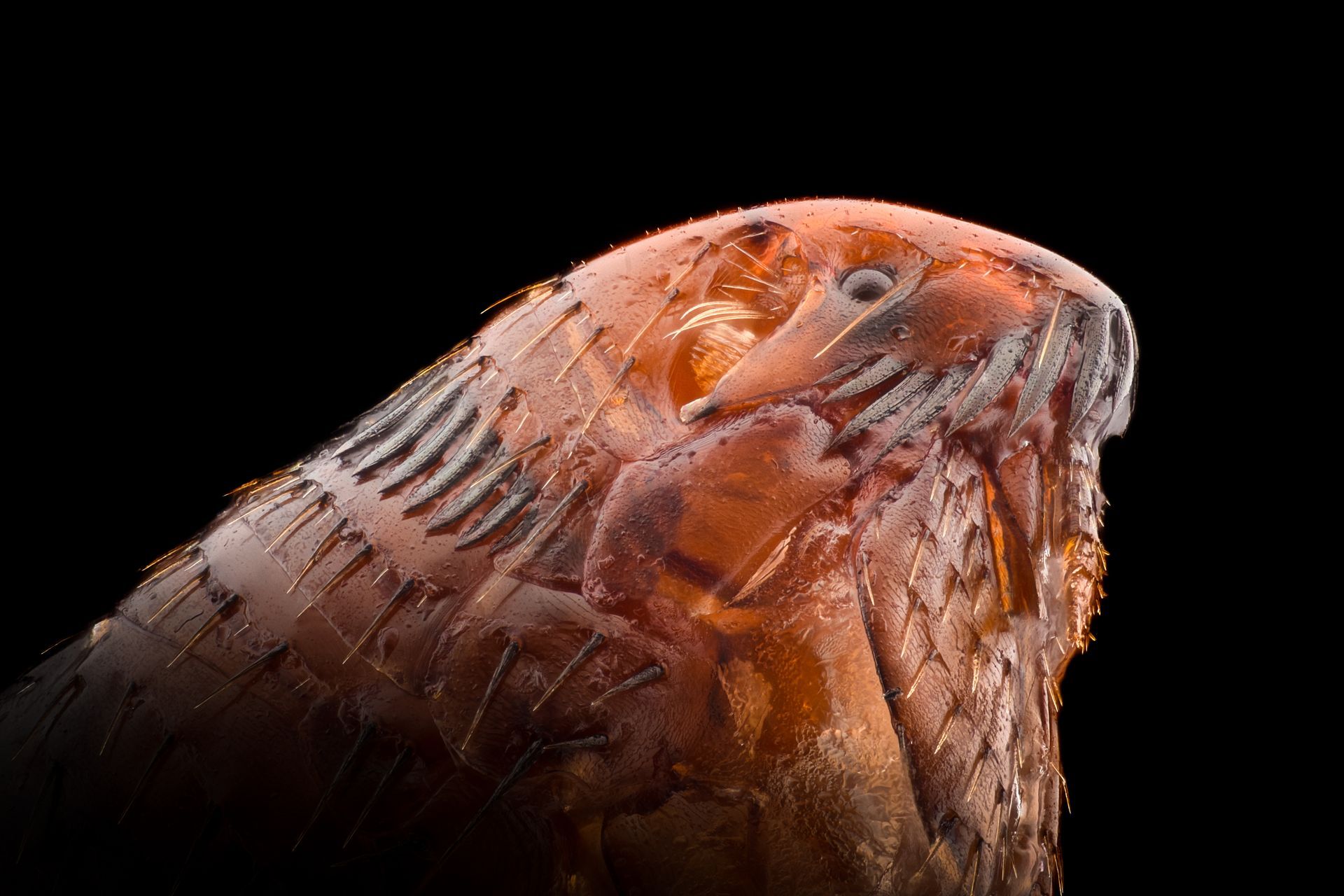
There are several species of fleas that can be found in Bristol, UK, but the three most common species are the cat flea (Ctenocephalides felis), the dog flea (Ctenocephalides canis), and the human flea (Pulex irritans). These species of fleas are ectoparasites, which means they feed on the blood of their hosts, which can include cats, dogs, and humans. The cat flea is the most common species and can also infest dogs, while the dog flea is more common on dogs. The human flea is rare and is typically found in homes that have rodents. Fleas can enter homes and businesses through pets, as well as through rodents, which can carry fleas on their fur. Fleas are known for their ability to reproduce quickly, making it difficult to control infestations. They can also cause health problems, such as allergic reactions and skin irritations. To manage and control flea infestations, it is essential to seek the services of a pest control company like Pale Horse Pest Control. Their trained technicians can identify the species of fleas and use safe and effective methods to eliminate them from homes and businesses in Bristol.New paragraph
Cockroaches

There are several species of cockroaches that can be found in Bristol, UK, with the three most common being the German cockroach (Blattella germanica), the Oriental cockroach (Blatta orientalis), and the American cockroach (Periplaneta americana). The German cockroach is the most common and is known for its small size and light brown color. The Oriental cockroach is larger and darker in color, while the American cockroach is the largest and can be identified by its reddish-brown color. These species of cockroaches are attracted to homes and businesses due to the abundance of food, water, and shelter that they provide. They are known to be nocturnal and can survive on a variety of food sources, including crumbs and food waste. They can also enter homes and buildings through cracks and openings in walls and foundations. Cockroaches can spread diseases and can cause allergies and asthma in people who are sensitive to their faeces and body parts. It is essential to seek the services of a pest control company like Pale Horse Pest Control to manage and control cockroach infestations in homes and businesses to prevent these pests from causing harm to individuals and the surrounding environment.
Rats
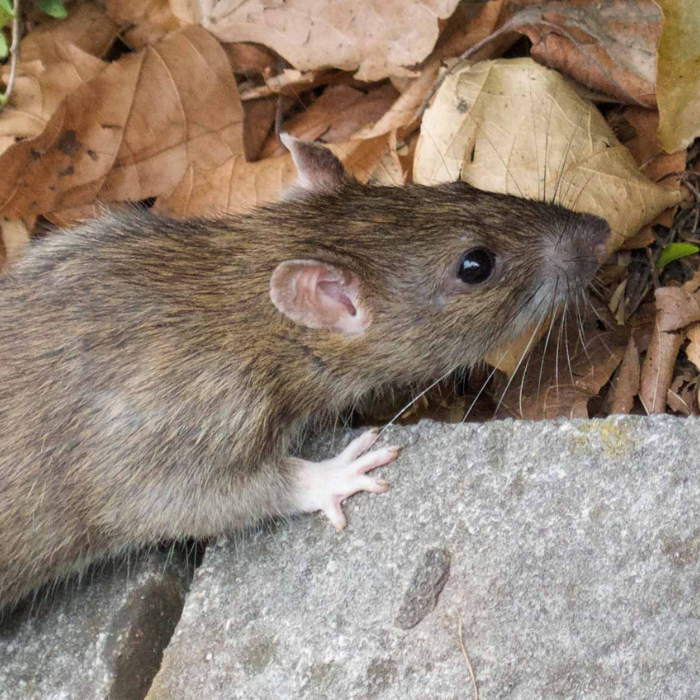
One of the most common pests in Bristol is the brown rat (Rattus norvegicus). These rodents are attracted to food and shelter and can easily enter homes through small openings, damaged sewer lines or through adjoining buildings and structures, like walls and fences. Rats are expert climbers and eat literally everything with flush down our toilets and sinks. The sewers are the reservoirs of rat activity, so a damaged sewer or drain is an open door for a large number of rats to get into a structure and
rats to get into cavity walls, ceiling and floor voids where they can breed and thrive! Rats breed quickly and can cause significant damage to property, spreading diseases as they do.
Mice
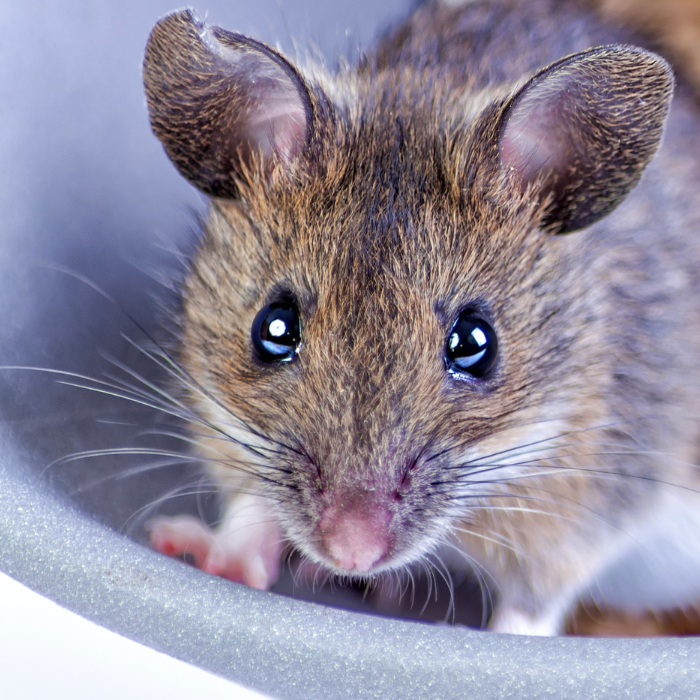
There are two species of mice that are common in Bristol, the field mouse (Apodemus sylvaticus) and the house mouse (Mus musculus). While both species are small and have a similar appearance, there are several differences between them. Field mice are typically larger and have a longer tail compared to house mice. They also have larger eyes and ears, and a browner coat. House mice, on the other hand, have a lighter coat and shorter tail. Both species can be found in people's homes and businesses, as they are attracted to the warmth and shelter provided by these environments. Additionally, they are known to be opportunistic feeders and can survive on a variety of food sources, including crumbs and scraps. Field mice are more commonly found in rural areas, while house mice tend to prefer urban environments. The presence of these mice can be a cause for concern, as they can spread diseases and cause damage to property. It is important to seek the services of a pest control company like Pale Horse Pest Control to manage and control mouse infestations in homes and businesses.
Chapter 2: The Importance of Pest Control
Pest control is essential for maintaining a healthy and safe environment. Pests can not only cause damage to property and spread diseases, but they can also trigger allergies and asthma in some people. In this chapter, we'll discuss the importance of pest control and the benefits it provides.
One of the primary benefits of pest control is the prevention of damage to property. Pests like rats, squirrels, and wasps can cause significant damage to buildings and structures. Rodents can chew through wiring and insulation, while insect pests like timber beetles can damage the wooden components of a building. By implementing effective pest control measures, property owners can protect their buildings and reduce repair costs.
Another benefit of pest control is the prevention of disease. Pests like rats and cockroaches can spread bacteria and other harmful microorganisms that can cause illness in humans. Biting flies and fleas can transmit diseases like malaria, dengue fever, and typhus. By controlling these pests, property owners can prevent the spread of disease and maintain a healthy environment.
Pest control can also improve the quality of life for residents and property owners. Pests like bed bugs and cat fleas can cause severe itching and discomfort.
Rodents and insects can trigger allergies and asthma in some people. By eliminating these pests, property owners can improve the comfort and well-being of their residents.
Finally, effective pest control can help property owners maintain their reputation and business operations.
Pests like rodents and cockroaches can damage a business's reputation and lead to lost customers. By implementing effective pest control measures, business owners can protect their brand and maintain their operations.
In summary, pest control is essential for protecting property, preventing disease, improving quality of life, and maintaining a positive reputation. In the following chapters, we'll discuss the various pest control methods and techniques available to property owners in Bristol.
Chapter 3: Prevention Techniques for Pest Infestation
Prevention is the key to effective pest control. By implementing preventive measures, property owners can reduce the likelihood of a pest infestation and reduce the need for expensive pest control measures. In this chapter, we'll discuss some of the most effective prevention techniques for pest infestation.
One of the most important prevention techniques is to eliminate potential sources of food, water, and shelter for pests. This can include storing food in sealed containers, fixing leaks and other sources of standing water, and sealing cracks and crevices in the building.
Regular cleaning and maintenance can also help prevent pest infestation. This can include vacuuming carpets and upholstery, cleaning up spills and crumbs, and removing clutter that can provide shelter for pests.
Sealing off entry points can also be an effective prevention technique. Pests like rodents and insects can enter a building through small openings and cracks. By sealing off these entry points, property owners can prevent pests from entering the building.
Using natural predators can also be an effective pest prevention technique. For example, introducing certain species of birds or insects that feed on pest species can help reduce the pest population.
In addition, property owners can use traps and baits to catch pests before they become a significant problem. This can include live traps for rodents or sticky traps for insects.
By implementing these prevention techniques, property owners can reduce the likelihood of a pest infestation and reduce the need for costly pest control measures. In the following chapters, we'll discuss different pest control methods and techniques available to property owners in Bristol.
Chapter 4: Chemical and Natural Pest Control Methods
There are two main types of pest control methods: chemical and natural. Chemical pest control involves the use of pesticides and other chemical treatments to eliminate pests. Natural pest control involves the use of non-toxic or low-toxicity treatments to control pests. In this chapter, we'll discuss the advantages and disadvantages of each method.
Chemical pest control methods are typically more effective in eliminating pests quickly. Pesticides can kill large numbers of pests in a short period, making them a popular choice for property owners dealing with significant infestations. However, the use of chemical pesticides can have negative environmental impacts and can also be harmful to humans and pets if not used correctly.
Natural pest control methods are typically safer for the environment and for humans and pets. They often use non-toxic or low-toxicity treatments to control pests. For example, using essential oils or natural predators to control pests can be effective without harming the environment or causing harm to humans or pets. However, natural pest control methods may not be as effective in eliminating pests quickly and may require more time and effort to implement.
In some cases, a combination of chemical and natural pest control methods may be necessary to effectively control a pest infestation. For example, a property owner may use chemical pesticides to eliminate a significant pest infestation and then use natural methods to prevent future infestations.
In the following chapters, we'll discuss different types of chemical and natural pest control methods available to property owners in Bristol. We'll also provide tips on how to choose the right pest control method for your specific pest problem.
Chapter 5: Choosing the Right Pest Control Company
Choosing the right pest control company is essential for effectively eliminating a pest infestation. There are many pest control companies in Bristol but at Pale Horse Pest Control we are BPCA accredited for complete peace of mind. If you live outside the southwest, then the following information should help. In this chapter, we'll provide tips on how to choose the right pest control company for your specific needs.
One of the most important factors to consider when choosing a pest control company is their experience and expertise. Look for companies with a proven track record of successfully eliminating pest infestations similar to yours.
Another factor to consider is the type of pest control methods used by the company. Some companies may use chemical pesticides, while others may use natural or non-toxic treatments. Make sure the company uses the method that you are comfortable with.
It's also important to consider the company's licensing and certifications. Look for companies that are licensed and certified by the relevant regulatory bodies in Bristol.
Finally, consider the company's reputation and customer service. Look for reviews and testimonials from past customers to get an idea of the company's level of service and customer satisfaction.
By considering these factors, property owners can choose the right pest control company for their specific pest problem. In the following chapters, we'll discuss different types of pest control methods and techniques used by pest control companies in Bristol.
Chapter 6: DIY Pest Control Tips and Tricks
While it's always best to consult with a pest control professional, there are some DIY pest control tips and tricks that property owners can implement to prevent and manage a pest infestation. In this chapter, we'll discuss some of the most effective DIY pest control methods.
One of the most effective DIY pest control methods is to eliminate potential sources of food, water, and shelter for pests. This can include storing food in sealed containers, fixing leaks and other sources of standing water, and sealing cracks and crevices in the building.
Regular cleaning and maintenance can also help prevent pest infestation. This can include vacuuming carpets and upholstery, cleaning up spills and crumbs, and removing clutter that can provide shelter for pests.
Sealing off entry points can also be an effective DIY pest control method. Pests like rodents and insects can enter a building through small openings and cracks. By sealing off these entry points with caulk or foam, property owners can prevent pests from entering the building.
Using natural pest control methods, such as essential oils or natural predators, can also be effective. For example, peppermint oil can repel rodents, while certain species of birds or insects can feed on pest species.
Traps and baits can also be effective DIY pest control methods. Live traps can be used to catch rodents and other pests, while sticky traps can be used to catch insects.
By implementing these DIY pest control tips and tricks, property owners can prevent and manage a pest infestation. However, if a pest infestation is significant, it's always best to consult with a pest control professional.
Chapter 7: Pest Control for Specific Areas of Your Home
Different areas of a home may require different pest control methods and techniques. In this chapter, we'll discuss some of the most common areas of a home and the pest control methods and techniques that are most effective.
The kitchen is a common area for pest infestations. Pests like cockroaches and ants are attracted to food and can quickly infest the area. To prevent infestations, property owners should store food in sealed containers, clean up spills and crumbs immediately, and fix any sources of standing water.
Bedrooms can also be a common area for pest infestations, especially bed bugs. Property owners should regularly inspect mattresses and bedding for signs of bed bugs, such as blood stains or faecal matter. Using bed bug covers on mattresses and box springs can also help prevent infestations.
Bathrooms are a common area for moisture-loving pests like silverfish and centipedes. To prevent infestations, property owners should fix any sources of standing water and ensure that the area is well-ventilated.
Basements and crawl spaces are common areas for rodent infestations. Property owners should seal off any entry points and use traps or baits to catch rodents before they become a significant problem.
By understanding the specific needs of different areas of a home, property owners can implement the most effective pest control methods and techniques.
Chapter 8: Dealing with Rodent Infestations
Rodents can cause significant damage to property and spread diseases. Property owners dealing with a rodent infestation should take immediate action to prevent and manage the infestation. In this chapter, we'll discuss the most effective pest control methods for rodent infestations.
One of the most effective methods for dealing with a rodent infestation is to seal off entry points. Rodents can enter a building through small openings and cracks. By sealing off these entry points with caulk or foam, property owners can prevent rodents from entering the building.
Traps and baits can also be effective in catching rodents. Live traps can be used to catch rodents without harming them, while snap traps and glue traps can be used to kill rodents. Bait stations can also be used to attract and poison rodents.
Preventing access to food and water can also help control a rodent infestation. Property owners should store food in sealed containers and fix any sources of standing water.
In some cases, property owners may need to use chemical pesticides to eliminate a significant rodent infestation. It's important to use these pesticides safely and follow the manufacturer's instructions.
If a rodent infestation is significant or persists despite DIY pest control methods, it's best to consult with a pest control professional. They can provide a more comprehensive and effective pest control solution.
Chapter 9: Managing Insect Infestations
Insects like cockroaches, ants, and fleas can quickly infest a building and cause significant damage. Property owners dealing with an insect infestation should take immediate action to prevent and manage the infestation. In this chapter, we'll discuss the most effective pest control methods for insect infestations.
One of the most effective methods for dealing with an insect infestation is to eliminate potential sources of food, water, and shelter for pests. Property owners should store food in sealed containers, fix any sources of standing water, and seal cracks and crevices in the building.
Using natural pest control methods can also be effective in controlling insect infestations. For example, peppermint oil can repel ants and spiders, while diatomaceous earth can be used to kill bed bugs and fleas.
Traps and baits can also be effective in catching insects. Sticky traps can be used to catch flies, while bait stations can be used to attract and poison ants.
In some cases, property owners may need to use chemical pesticides to eliminate a significant insect infestation. It's important to use these pesticides safely and follow the manufacturer's instructions.
If an insect infestation is significant or persists despite DIY pest control methods, it's best to consult with a pest control professional. They can provide a more comprehensive and effective pest control solution.
Chapter 10: Protecting Your Garden from Pests
Pests can cause significant damage to gardens and crops. Property owners can use various pest control methods to protect their gardens from pests. In this chapter, we'll discuss some of the most effective pest control methods for gardens.
One of the most effective methods for protecting a garden from pests is to use natural predators. For example, ladybugs can be used to control aphids, while praying mantises can be used to control other insects.
Using physical barriers can also be effective in protecting a garden from pests. For example, netting can be used to protect crops from birds, while row covers can be used to protect crops from insects.
Traps and baits can also be effective in catching garden pests. For example, sticky traps can be used to catch whiteflies and other flying insects, while bait stations can be used to attract and poison snails and slugs.
In some cases, property owners may need to use chemical pesticides to eliminate a significant garden pest infestation. It's important to use these pesticides safely and follow the manufacturer's instructions.
By using these pest control methods, property owners can protect their gardens from pests and ensure a healthy and productive harvest.
Chapter 11: Commercial Pest Control for Bristol Businesses
Pest control is essential for maintaining a healthy and safe environment for employees and customers in Bristol businesses. In this chapter, we'll discuss some of the most effective pest control methods for commercial properties.
One of the most effective methods for commercial pest control is to implement preventive measures. This can include regular cleaning and maintenance, as well as eliminating potential sources of food and water for pests.
Sealing off entry points can also be an effective method for preventing pest infestations. Pests can enter a building through small openings and cracks. By sealing off these entry points with caulk or foam, property owners can prevent pests from entering the building.
Traps and baits can also be effective in catching pests before they become a significant problem. For example, fly traps can be used to catch flies, while bait stations can be used to attract and poison rodents.
Using natural pest control methods can also be effective in commercial pest control. For example, essential oils can be used to repel pests like mosquitoes and flies, while certain species of birds or insects can be introduced to control other pest species.
In some cases, property owners may need to use chemical pesticides to eliminate a significant pest infestation. It's important to use these pesticides safely and follow the manufacturer's instructions.
By implementing these pest control methods, property owners can maintain a healthy and safe environment for employees and customers in Bristol businesses.agraph
Chapter 12: Pest Control for Food Processing Facilities
Pest control is especially important for food processing facilities in Bristol. Pests can contaminate food products and lead to the spread of disease. In this chapter, we'll discuss some of the most effective pest control methods for food processing facilities.
Preventing access to food and water is essential for controlling pest infestations in food processing facilities. Property owners should store food in sealed containers and fix any sources of standing water.
Sealing off entry points is also important for preventing pest infestations in food processing facilities. Pests can enter a building through small openings and cracks. By sealing off these entry points with caulk or foam, property owners can prevent pests from entering the building.
Regular cleaning and maintenance can also help prevent pest infestations in food processing facilities. This can include vacuuming and mopping floors, wiping down surfaces, and removing clutter.
Traps and baits can also be effective in catching pests before they become a significant problem. For example, bait stations can be used to attract and poison rodents, while fly traps can be used to catch flies.
In some cases, property owners may need to use chemical pesticides to eliminate a significant pest infestation. It's important to use these pesticides safely and follow the manufacturer's instructions.
By implementing these pest control methods, property owners can ensure a safe and hygienic environment for food processing in Bristol.
Chapter 13: Pest Control for Healthcare Facilities
Pest control is essential for maintaining a safe and healthy environment in healthcare facilities. Pests can spread disease and trigger allergies in patients and staff. In this chapter, we'll discuss some of the most effective pest control methods for healthcare facilities.
Preventing access to food and water is essential for controlling pest infestations in healthcare facilities. Property owners should store food in sealed containers and fix any sources of standing water.
Sealing off entry points is also important for preventing pest infestations in healthcare facilities. Pests can enter a building through small openings and cracks. By sealing off these entry points with caulk or foam, property owners can prevent pests from entering the building.
Regular cleaning and maintenance can also help prevent pest infestations in healthcare facilities. This can include vacuuming and mopping floors, wiping down surfaces, and removing clutter.
Traps and baits can also be effective in catching pests before they become a significant problem. For example, bait stations can be used to attract and poison rodents, while fly traps can be used to catch flies.
In some cases, property owners may need to use chemical pesticides to eliminate a significant pest infestation. It's important to use these pesticides safely and follow the manufacturer's instructions.
By implementing these pest control methods, property owners can ensure a safe and healthy environment for patients and staff in healthcare facilities.
Chapter 14: Pest Control for Schools and Universities
Pest control is essential for maintaining a safe and healthy environment for students and staff in schools and universities. Pests can spread disease and cause damage to buildings and property. In this chapter, we'll discuss some of the most effective pest control methods for schools and universities.
Preventing access to food and water is essential for controlling pest infestations in schools and universities. Property owners should store food in sealed containers and fix any sources of standing water.
Sealing off entry points is also important for preventing pest infestations in schools and universities. Pests can enter a building through small openings and cracks. By sealing off these entry points with caulk or foam, property owners can prevent pests from entering the building.
Regular cleaning and maintenance can also help prevent pest infestations in schools and universities. This can include vacuuming and mopping floors, wiping down surfaces, and removing clutter.
Traps and baits can also be effective in catching pests before they become a significant problem. For example, bait stations can be used to attract and poison rodents, while fly traps can be used to catch flies.
In some cases, property owners may need to use chemical pesticides to eliminate a significant pest infestation. It's important to use these pesticides safely and follow the manufacturer's instructions.
By implementing these pest control methods, property owners can maintain a safe and healthy environment for students and staff in schools and universities.
Chapter 15: Choosing a Pest Control Professional in Bristol
When dealing with a significant pest infestation, it's important to consult with a pest control professional. In this chapter, we'll discuss some of the most important factors to consider when choosing a pest control professional in Bristol.
One of the most important factors to consider when choosing a pest control professional is their experience and qualifications. Property owners should choose a pest control professional with a proven track record of success and the necessary certifications and licenses.
The methods and techniques used by a pest control professional are also important to consider. Property owners should choose a pest control professional who uses safe and effective pest control methods, and who can provide a customised pest control solution for their specific needs.
The cost of pest control services is also an important consideration. Property owners should compare the costs of different pest control professionals and choose one that offers high-quality services at a reasonable price.
Finally, it's important to choose a pest control professional who provides excellent customer service. Property owners should choose a professional who is responsive to their needs and who can provide ongoing support and advice.
By considering these factors, property owners can choose a pest control professional in Bristol who can effectively prevent and manage pest infestations and provide a safe and healthy environment for their property.